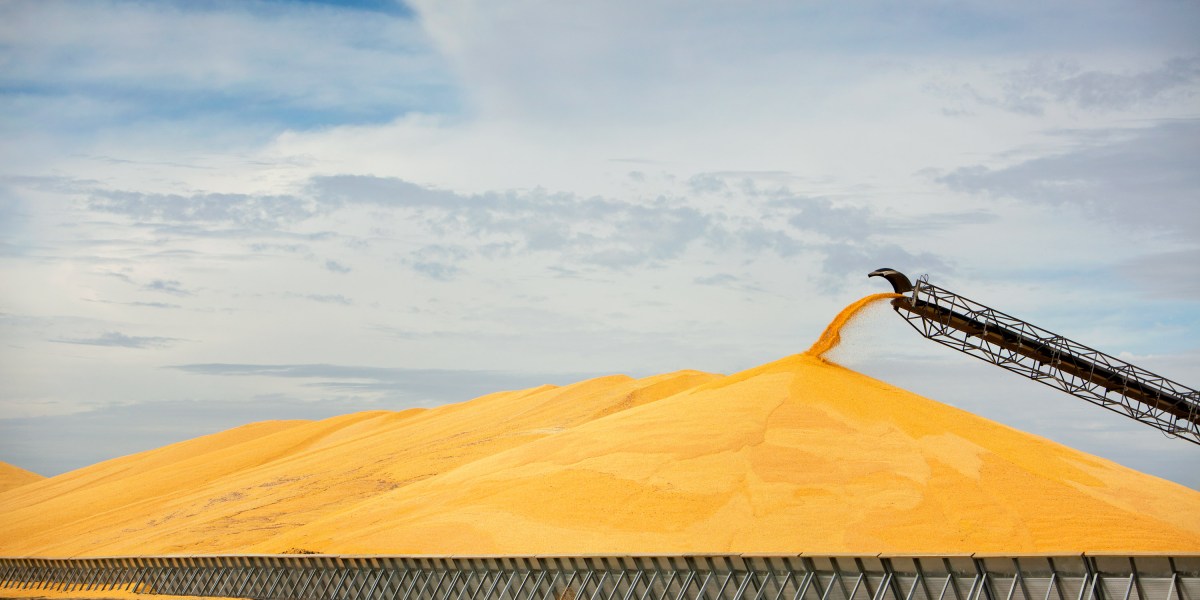This creamy vegan cheese was made with AI
As Climax Foods CEO Oliver Zahn serves up a plate of vegan brie, feta, and blue cheese in his offices in Emeryville, California, I’m keeping my expectations modest. Most vegan cheese falls into an edible uncanny valley full of discomforting not-quite-right versions of the real thing. But the brie I taste today is smooth, rich, and velvety—and delicious. I could easily believe it was made from cow’s milk, but it is made entirely from plants. And it couldn’t have come into existence, says Zahn, without the use of machine learning.
Climax Foods is one of several startups, also including Shiru of Alameda, California, and NotCo of Chile, that have used artificial intelligence to design plant-based foods. The companies train algorithms on datasets of ingredients with desirable traits like flavor, scent, or stretchability. Then they use AI to comb troves of data to develop new combinations of those ingredients that perform similarly.
“Traditional ingredient discovery can take years and tens of millions of dollars, and what results are ingredients only incrementally better than the previous generation,” says Shiru CEO Jasmin Hume, who wrote her PhD thesis on protein engineering. “[Now] we can go from scratch, meaning what nature has to offer; pick out the proteins that will function best; and prototype and test them in about three months.”
Not everyone in the industry is bullish about AI-assisted ingredient discovery. Jonathan McIntyre, a food consultant who formerly headed R&D teams in both beverages and snacks at Pepsi, thinks the technology is “significantly” overhyped as a tool for his field. “AI is only as good as the data you feed it,” he says. And given how jealously food companies guard formulas and proprietary information, he adds, there won’t necessarily be sufficient data to yield productive results. McIntyre has a cautionary tale: during his stint at Pepsi, the company attempted to use IBM’s Watson to create a better soda. “It formulated the worst-tasting thing ever,” he says.
Climax Foods circumvented the data scarcity problem by creating its own training sets to essentially reverse-engineer why cheese tastes so good. “When we started, there was very little data on why an animal product tastes the way it does—animal cheddar, blue, brie, mozzarella—because it is what it is,” says Zahn, who previously headed data science for Google’s massive ads business. “There [was] no commercial reason to understand it.”
In the food science lab on the ground floor of the Climax offices, on the site of an old chocolate factory, Zahn shows off some of the instruments his team used to build its data trove. There’s a machine that uses ion chromatography to show the precise balance of different acids after bacterial strains break down lactose. A mass spectrometer acts like an “electronic nose” to reveal which volatile compounds generate our olfactory response to food. A device called a rheometer tracks how a cheese responds to physical deformation; part of our response to cheese is based on how it reacts to slicing or chewing. The cheese data creates target baselines of performance that an AI can try to reach with different combinations of plant ingredients.
Using educated guesswork about which plants might perform well as substitutes, Climax food scientists have created more than 5,000 cheese prototypes in the past four years. With the same lab instruments employed on animal cheese, the Climax team performs an analysis that includes roughly 50 different assays for texture and flavor, generating millions of data points in the process. The AI is trained on these prototypes, and the algorithm then suggests mixtures that might perform even better. The team tries them out and keeps iterating. “You vary all the input knobs, you measure the outputs, and then you try to squeeze the difference between the output and your animal target to be as small as possible,” Zahn says. Including small-scale “micro-prototypes,” he estimates, Climax has analyzed roughly 100,000 plant ingredient combinations.
Tasting and subtly adjusting the ingredient blends in so many prototypes by hand would take several thousand years, Zahn says. But starting from zero in early 2020, he and his AI-aided team were able to formulate their first cheese and bring it to market in April 2023.
The plant constituents of that product, a vegan blue cheese, are hardly exotic. The top four ingredients are pumpkin seeds, coconut oil, lima beans, and hemp protein powder. And yet Dominique Crenn, a Michelin-starred chef, described it as “soft, buttery, and surprisingly rich—beyond imagination for a vegan cheese.”
Bel Group, the maker of Laughing Cow, has an agreement to license the company’s products, and a second large producer that Zahn cannot yet publicly name has also signed on. He is currently beating the venture capital bushes for a funding round and hopes to begin selling the brie and feta later this year.
Unlike Watson’s ill-fated attempt to formulate a better Pepsi, the Climax algorithms can pull together ingredients in new ways that seem like alchemy. “There is an interaction of one component with another component that triggers a flavor or sensation that you didn’t expect,” Zahn says. “It’s not like just the sum of the two components—it’s something completely different.”
One reason to develop alternatives to dairy-based cheese is its environmental cost: by weight, cheese has a higher carbon footprint than either chicken or pork, and humans eat roughly 22 million tons of it each year. For Zahn, the answer is not asking consumers to settle for a rubbery, bland substitute—but offering a plant-based version that tastes as good or better and could cost much less to make.
Andrew Rosenblum’s writing has appeared in New Scientist, Popular Science, Wired, and many other places.


